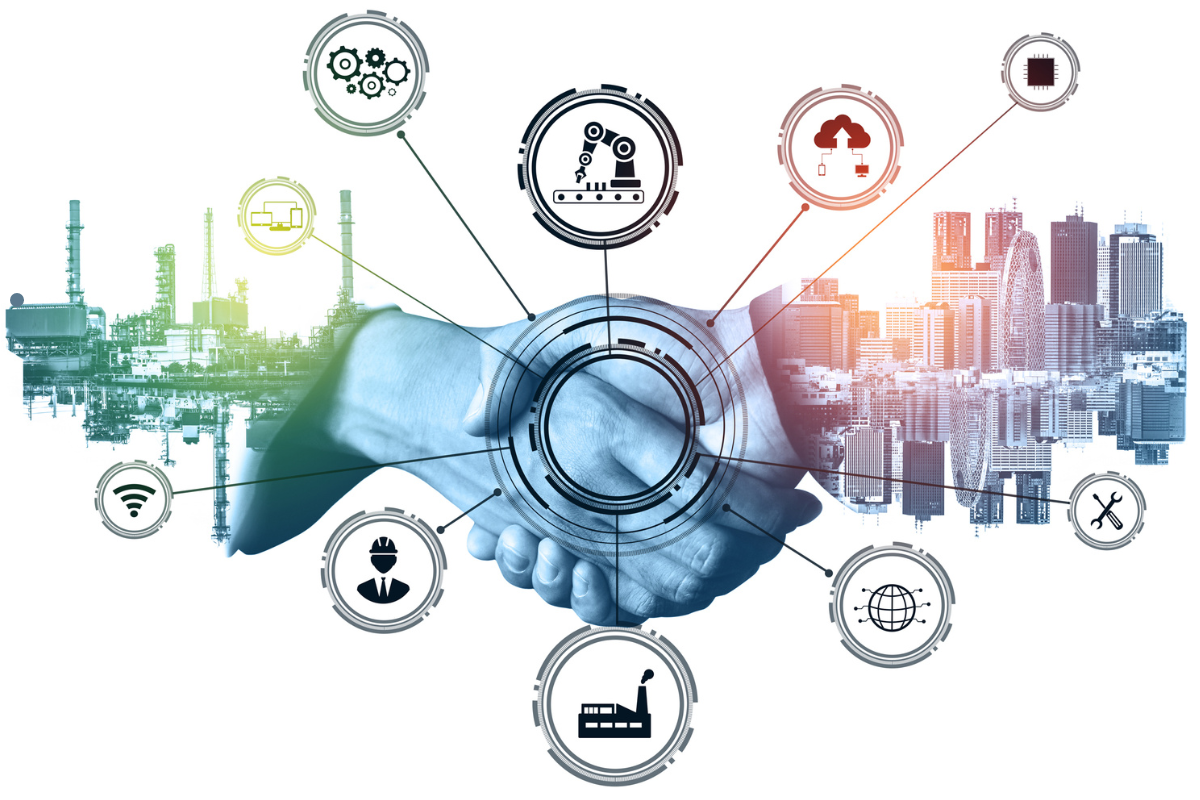
04 Aug Real-World Examples of Robotic Automation in the FMCG Industry
Real-World Examples of Robotic Automation in the FMCG Industry
The Fast-Moving Consumer Goods (FMCG) industry operates in a high-demand, high-speed environment where efficiency, consistency, and quality are non-negotiable. As consumer expectations increase and global competition intensifies, companies are embracing robotic automation to streamline their operations, enhance productivity, and remain competitive. This blog delves deep into real-world examples of how leading FMCG giants like Nestlé, Unilever, PepsiCo, Coca-Cola, and others are leveraging robotic technologies to automate everything from packaging and palletizing to inspection and warehouse management.
By showcasing specific case studies from globally recognized brands, we explore how robotic arms, collaborative robots (cobots), vision systems, and automated guided vehicles (AGVs) are transforming production lines and supply chains. These innovations are not only increasing speed and precision but also improving workplace safety and reducing operational costs. Whether it’s a robotic system inspecting snack chips in milliseconds or a fully automated warehouse retrieving beverage pallets with pinpoint accuracy, the impact of automation is profound and measurable.
This section provides a comprehensive look at the practical application of robotics in the FMCG sector, offering inspiration and insights for manufacturers looking to adopt automation. Whether you’re a plant manager, operations head, or business strategist, these examples underline the tangible benefits of integrating robotic automation into modern FMCG workflows.
Real-World Examples of Robotic Automation in the FMCG Industry
The FMCG (Fast-Moving Consumer Goods) industry is characterized by high-volume production, stringent quality standards, and rapid turnaround times. As global competition and consumer expectations continue to rise, companies in this sector are increasingly turning to robotic automation to stay ahead. Below are real-world examples that demonstrate how robotic automation is transforming FMCG operations from the factory floor to the distribution center.
1. Nestlé – Automated Packaging Lines for Consistency and Speed
Nestlé, one of the world’s largest food and beverage companies, uses robotic automation extensively across its global facilities. In its UK manufacturing plant, robotic arms are deployed for high-speed packaging of confectionery products. These robots pick and place items into cartons at a rate far beyond human capabilities while maintaining uniformity and hygiene standards. Robotic vision systems ensure only correctly oriented and defect-free products proceed to packaging, significantly reducing waste.
2. Unilever – Robotic Palletizing at Scale
Unilever has implemented robotic palletizing systems in its production plants to manage the bulk movement of finished goods. These systems automatically stack products onto pallets with precise alignment and stability, optimizing space for storage and transport. By using collaborative robots (cobots), Unilever has also ensured that human workers can safely operate alongside machines, reducing labor fatigue and increasing overall throughput.
3. PepsiCo – Robotic Inspection and Quality Control
In PepsiCo’s snack food division, robotic vision systems are used for real-time quality control. For instance, in potato chip production, robots inspect each chip on the conveyor for size, shape, and color defects. These smart systems can instantly remove defective chips from the line, improving product quality and reducing customer complaints. This approach also supports compliance with food safety regulations, critical in the FMCG space.
4. Procter & Gamble – End-to-End Automation in Manufacturing
Procter & Gamble (P&G) integrates robotics across multiple stages of manufacturing—from raw material handling to final packing. In its detergent plant, robotic systems automate filling, capping, labeling, and boxing. The use of automated guided vehicles (AGVs) further enables seamless transfer of materials between stations. This end-to-end automation minimizes manual intervention, increases efficiency, and supports around-the-clock operations.
5. Coca-Cola – Warehouse Robotics for Inventory Management
Coca-Cola’s bottling plants and warehouses employ advanced robotics for picking, sorting, and inventory tracking. Automated storage and retrieval systems (AS/RS) help streamline logistics by quickly locating and retrieving specific beverage pallets. This not only reduces human error but also speeds up dispatch times. Integration with enterprise resource planning (ERP) systems ensures that inventory data is updated in real time, supporting better demand forecasting.
6. Mondelez International – Robotic Handling in Confectionery
In its chocolate and biscuit production lines, Mondelez International uses delta robots for high-speed product sorting and placement. These robots handle delicate items with care, ensuring they remain undamaged while maintaining high throughput. Robotic automation has allowed the company to scale production without sacrificing quality, especially during seasonal demand peaks like holidays and festivals.
Why These Examples Matter
These real-world examples highlight how robotic automation is not just a futuristic concept—it’s a practical solution delivering measurable ROI in the FMCG industry today. From reducing waste and labor costs to enhancing speed and product quality, robotic systems are revolutionizing how FMCG companies produce, package, and deliver goods. As technology advances, we can expect even more intelligent, adaptive, and cost-efficient robotic solutions tailored to the fast-paced demands of this sector.

No Comments